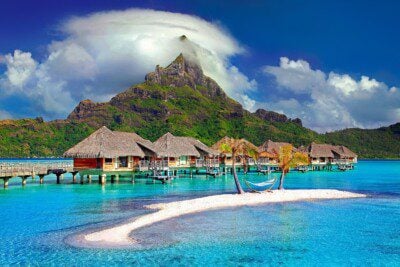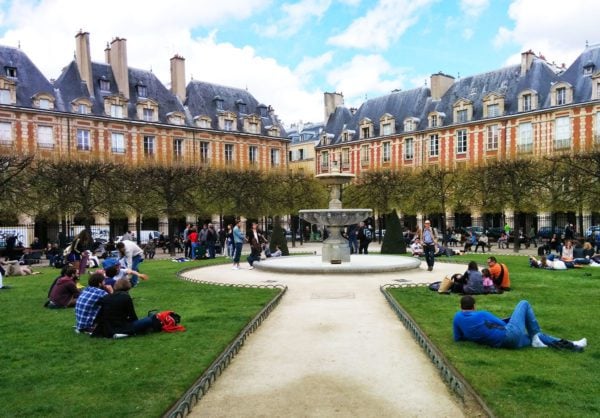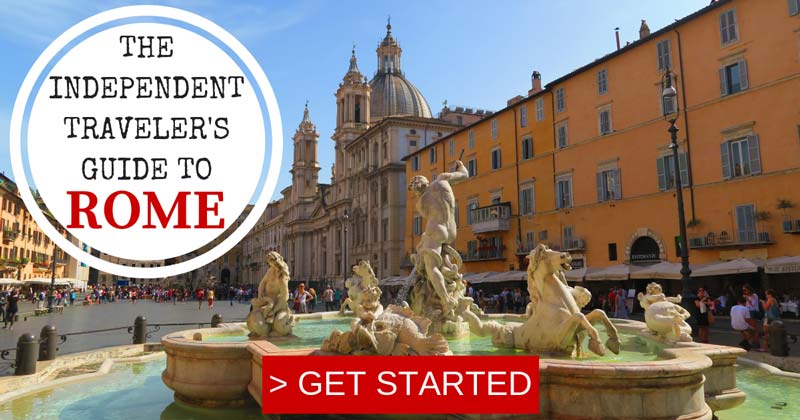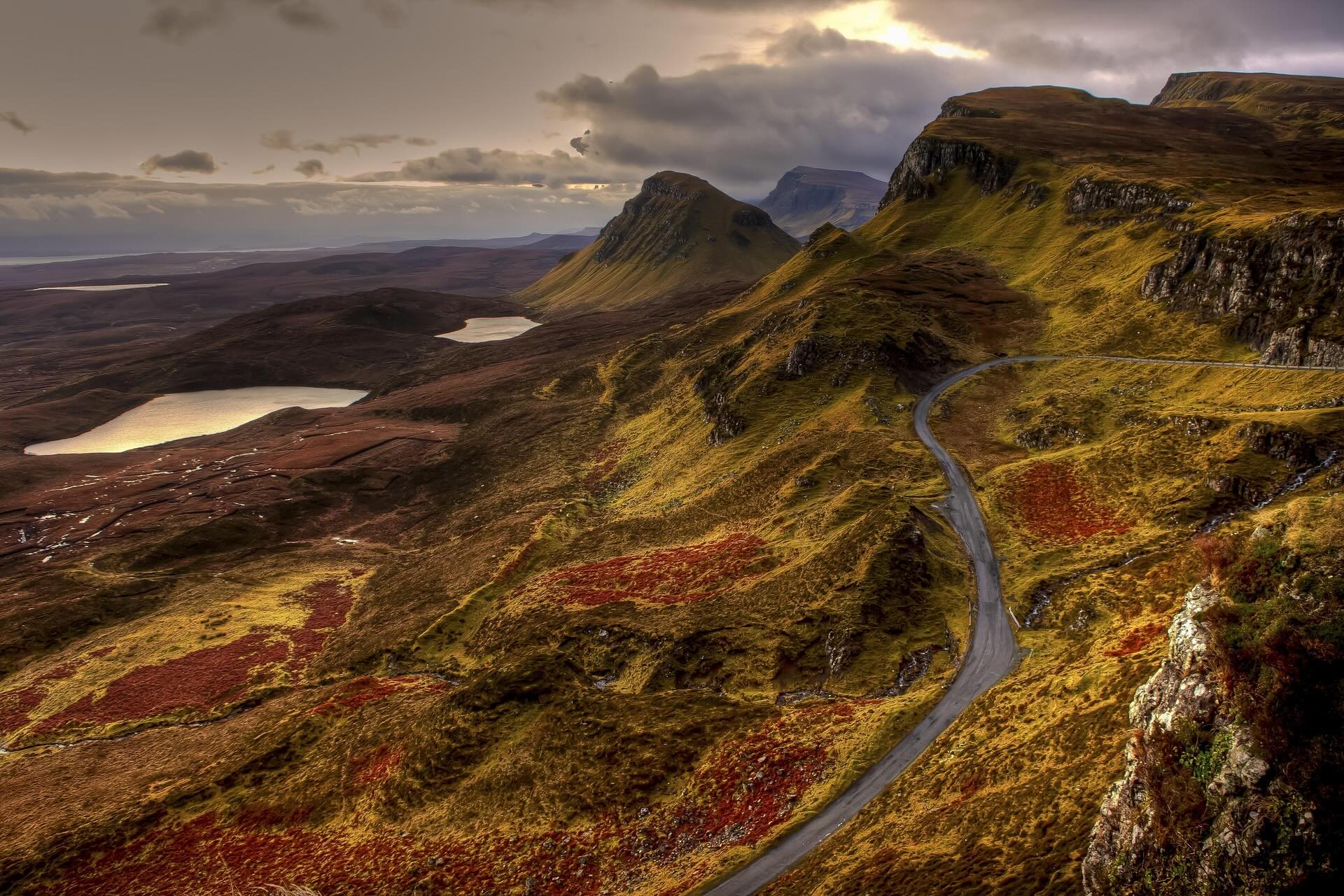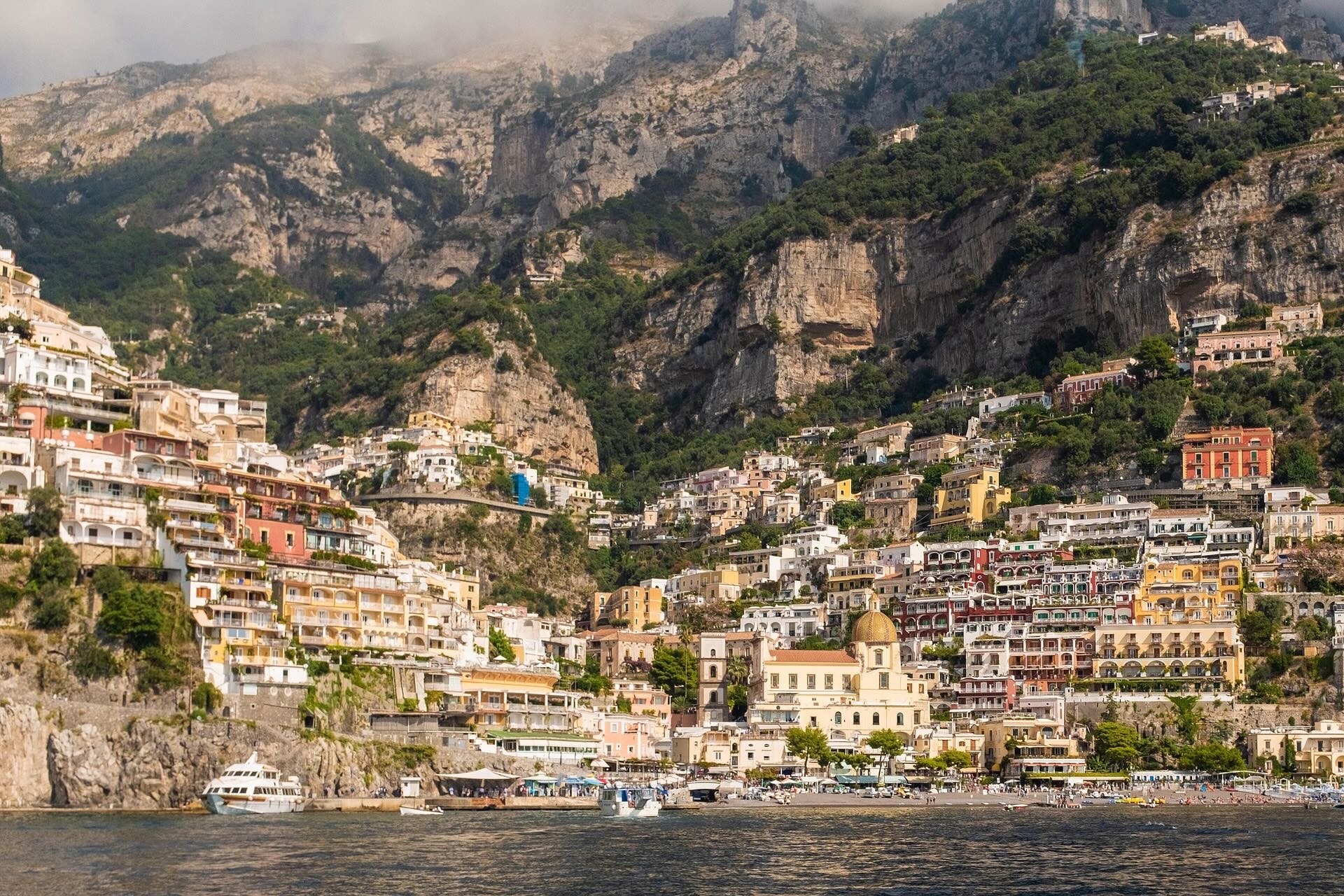5 Days In Rome
Day 5: The Vatican
The last day in this 5 days in Rome itinerary is mostly dedicated to the Vatican. Gaining independence in 1929 and covering an area measuring a mere 0.44 km², the Vatican is the smallest country in the world and the governing seat of Catholicism. As a tourist, you might forget that the Vatican is essentially a “giant office” but there to remind you are priests and nuns coming and going throughout the day.

Preparing for your visit to the Vatican
Visiting the Vatican, especially with children, can make for a challenging day thanks to the popularity of its sites and the inevitable queues. Here are a few tips to optimize your experience:
- Consider it a must to purchase tickets in advance, at the very least for the Vatican Museums or you will be waiting in an endless line.
- There are many museums and quite a lot of special tours that can be booked for those who really wish to uncover the layers but the basics remain the Vatican Museums, St Peter’s Basilica and the bonus visit of Castel Sant’Angelo.
- Since the Vatican Museums are closed on Sunday, it doesn’t make sense to visit the Vatican on that day. Moreover, it’s best to avoid Mondays as well since many groups and individuals are “waiting” for the first opening day of the week (but this isn’t a rule of thumb).
- Bring lots of water as there aren’t that many refill fountains around. Snacks are also essential.
- Be mentally prepared to be constantly approached by “agents” of tour companies trying to sell you tickets. They are simply relentless but you just need to practice saying “I already have tickets, thank you”.

Ponte Sant’angelo
There’s no better way to cross the Tiber River into the Vatican than over the Sant’angelo bridge. Adorned by angels sculpted by Bernini on either side, the bridge leads to the Sant’angelo Castle, an optional tour that will be mentioned towards the end of this Vatican itinerary. Look to your left at the Ponte Vittorio Emanuele II and its reflection on the river. At the edge of the bridge, begin the grand approach to St Peter’s Square.

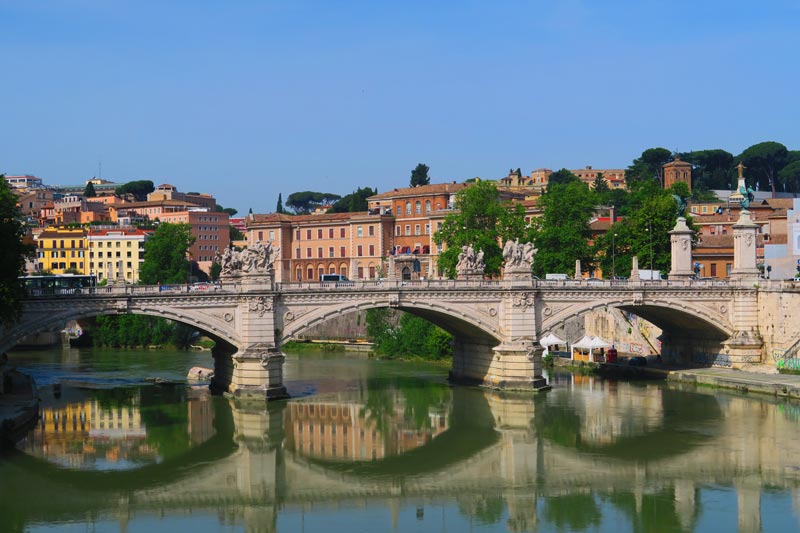
St. Peter’s Square
Piazza San Pietro is without a doubt the grandest of all Roman squares and a fitting entrance to the ruling capital of the Catholic world, which for many centuries was the de facto global ruling power. The obsessively symmetrical piazza is filled with symbolism, thanks in part to our good friend Bernini. At the center of the square is an Egyptian obelisk hauled over to Rome in 36 AD and repositioned at its current location in 1586. From the square, you can see the famous balcony from which the Pope often addresses the masses.
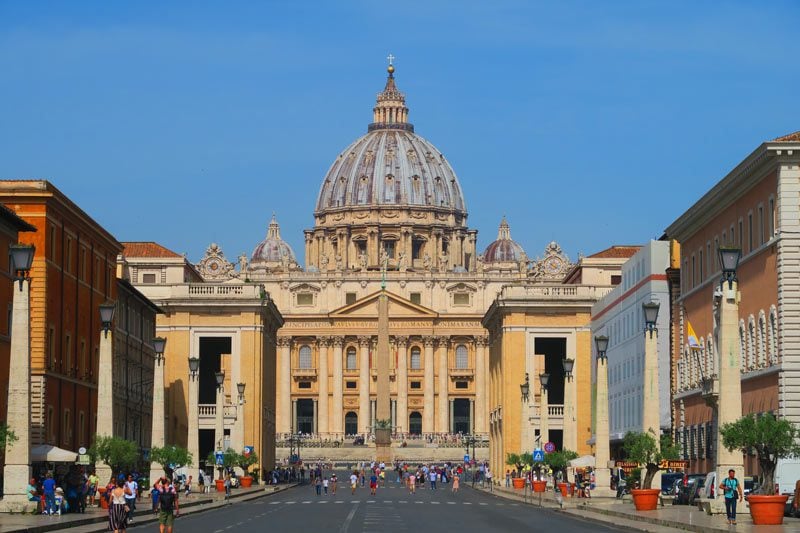

For visitors to the Vatican, this will be your first “wow” moment but also where you begin to realize that you are not the only ones here. The better part of the square is currently fenced off but you can enter after clearing security. Though you would think it makes sense to head inside the basilica, I actually recommend to first head to the Vatican Museums, get that “big task” checked off the list and return here later (much like we did with the Colosseum).
The Vatican Museums
Housed in a 15th-century Papal palace, the Vatican Museums are among the world’s finest, ranking right up there with the Louvre in Paris and maybe even surpassing its appeal. It is certainly a must-see attraction for any first-time visitor to Rome (closed Sundays). Over the centuries, the Vatican has amassed a near-infinite amount of treasures, some hidden deep in its underground vaults and some which are on display for ordinary visitors such as us.
Just about every visitor to Rome pays a visit to the Vatican Museums so, from St. Peter’s Square, you’ll simply need to follow the crowds and walk for about 15 minutes until reaching the museum’s entrance. Since you listened to my advice, you will have purchased your Vatican Museums tickets in advance and you’ll simply breeze past those who are about to wait for hours in line. You’ll pay a small premium but it is absolutely worth it. Show your confirmation to the staff and once you’ve cleared security, proceed upstairs to print your actual tickets from the machine (the process is very quick and efficient).

You could spend an entire day in the museum complex but if you just want to see the major highlights, two to three hours is a good amount of time to plan for. Keep in mind that there’s pretty much a constant stream of visitors and groups so the claustrophobic feeling at times, isn’t for everyone. Our tickets were for a 10:30 designated entrance and by 12:30, we were already out. The Vatican Museums are written in plural but essentially, we’re talking about a single complex with interconnected wings that are referred to as museums.
First on our particular tour was the Pio-Clementino Museum, home to thousands of sculptures and artifacts from Ancient Greece and Egypt. The signature feature of this particular section (besides the various works which I will spare you from listing) is the sculpture gallery, a long hall adorned on both sides by ancient works.

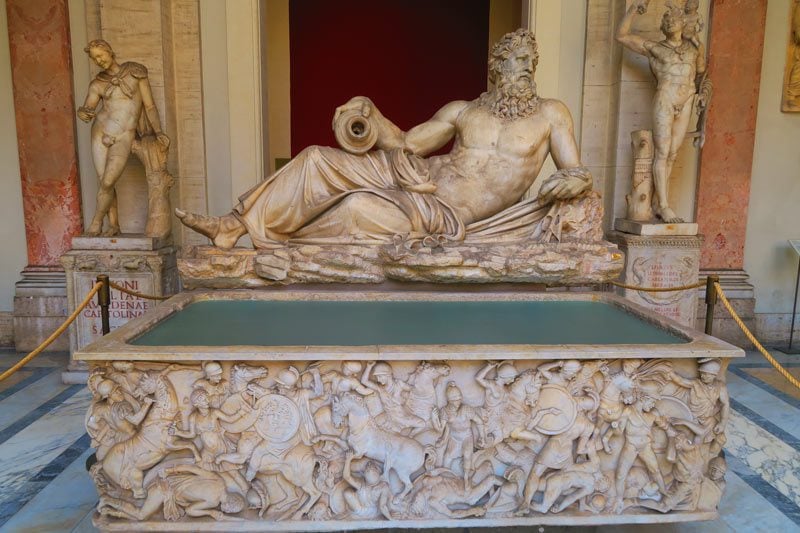
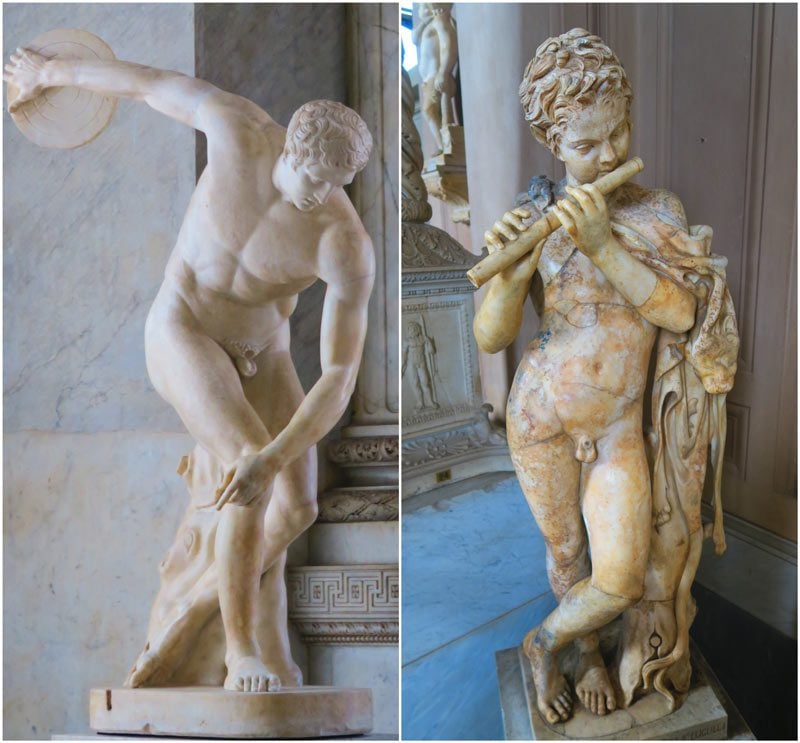

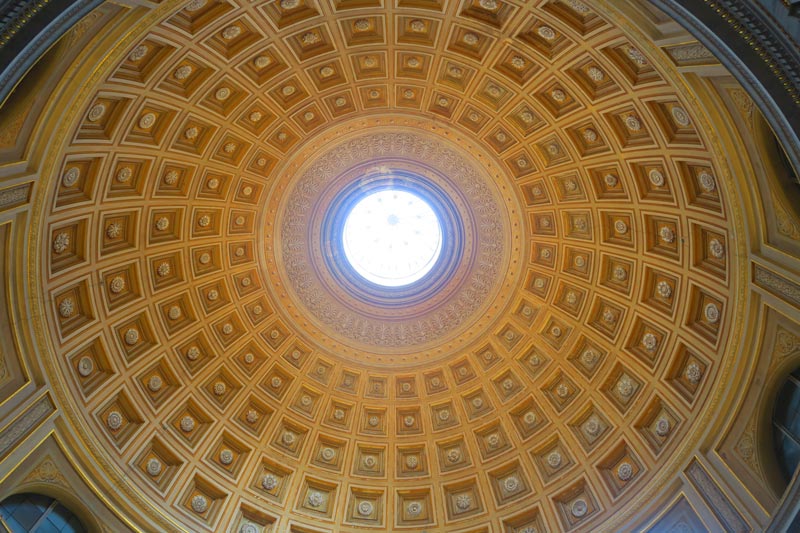
Next up Galleria degli Arazzi with its massive display of tapestries, followed by one of my favorite stops – Galleria delle Carte Geografiche. This long gallery displays exquisitely detailed 16th-century maps of Italy and the Mediterranean. As impressive as the giant maps are, don’t forget to look up and marvel at the frescoed ceiling. It’s hard to imagine the level of artistry that once existed in this part of the world.
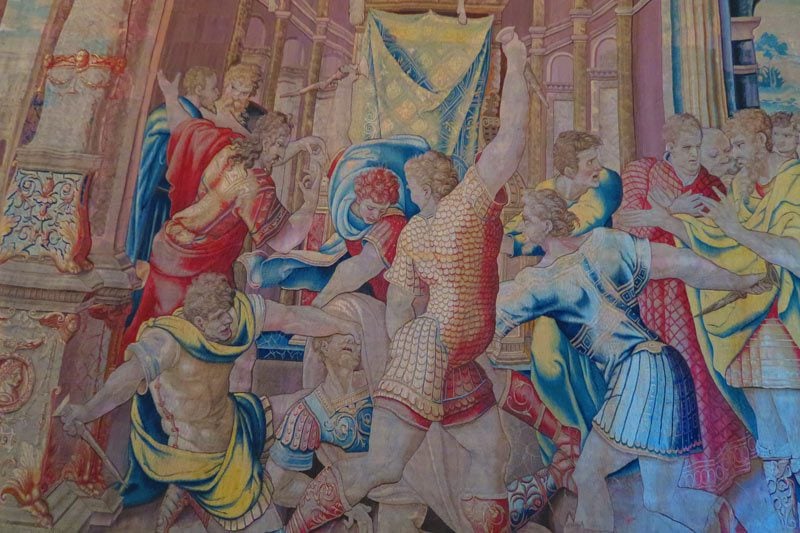
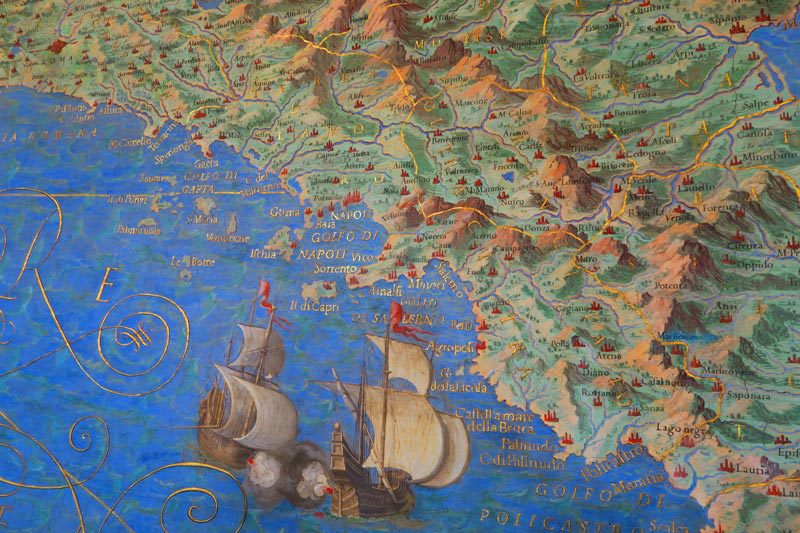

If you haven’t moved from your seat by now, our next stop should do the trick. Apart from the Sistine Chapel, the Raphael Rooms at the Vatican Museums are the most prized stops on your visit. When Pope Julius II moved into the palace, he commissioned the gifted artist to “decorate the place” and the result is a collection of grand religious paintings that didn’t leave a speck of white on the walls.
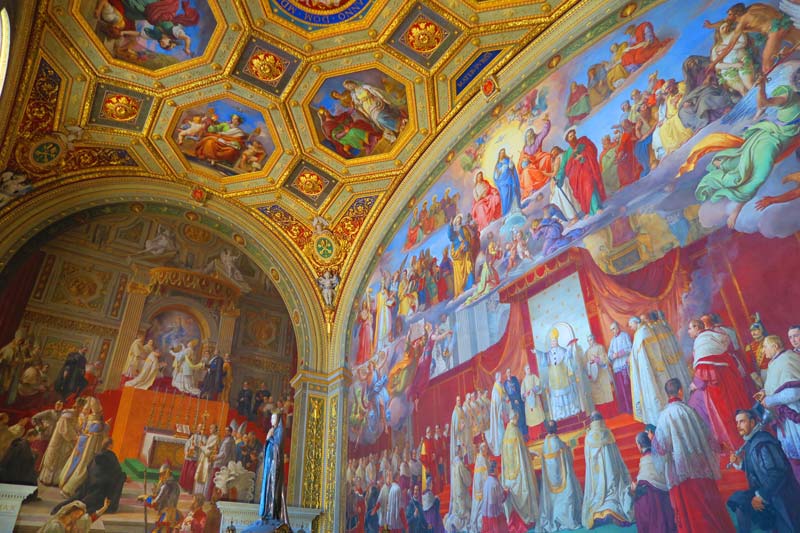
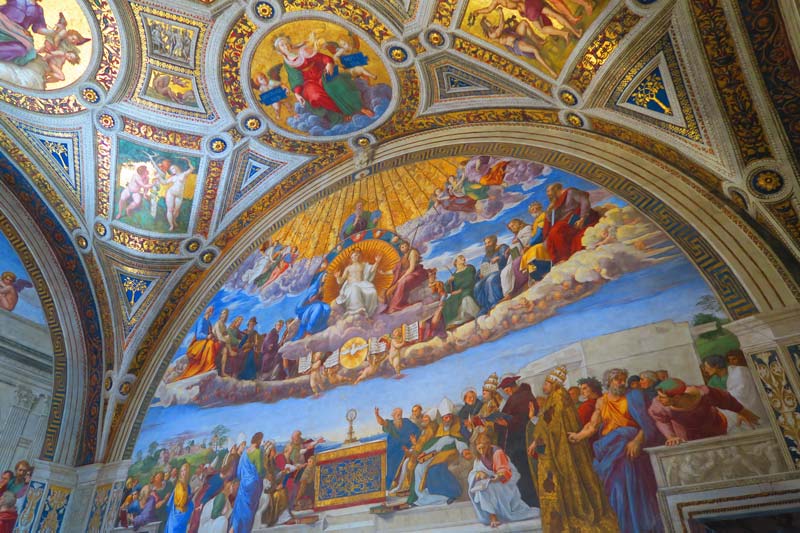
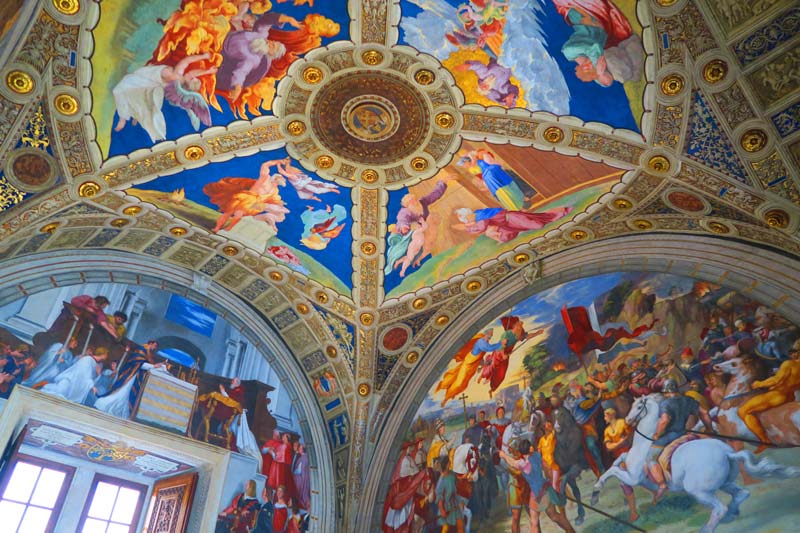
The last major stop is the grandest of them all, Michaelangelo’s Sistine Chapel. Built during the late 15th century for Pope Sixtus IV, as its name suggests, this is a place of worship, where the Pope can pray in solitude if he wishes. In fact, if you’ve seen the film (or read the book) Angels & Demons, you might also recall that this is also where the conclave of cardinals meets to elect a new pope. As such, even with the never-ending stream of visitors, guards enforce a strict minute of silence inside the chapel every 10 minutes or so. Unfortunately, filming inside the chapel is strictly forbidden, but let’s just say that it’s not that difficult to sneak in a photo if you time things right.

Lining the chapel’s walls are depictions from the Last Judgment, but it is the ceiling painting that trumps everything. Its signature painting of the Creation of Adam is where you’ll see the hand of God (nearly) touching man’s.
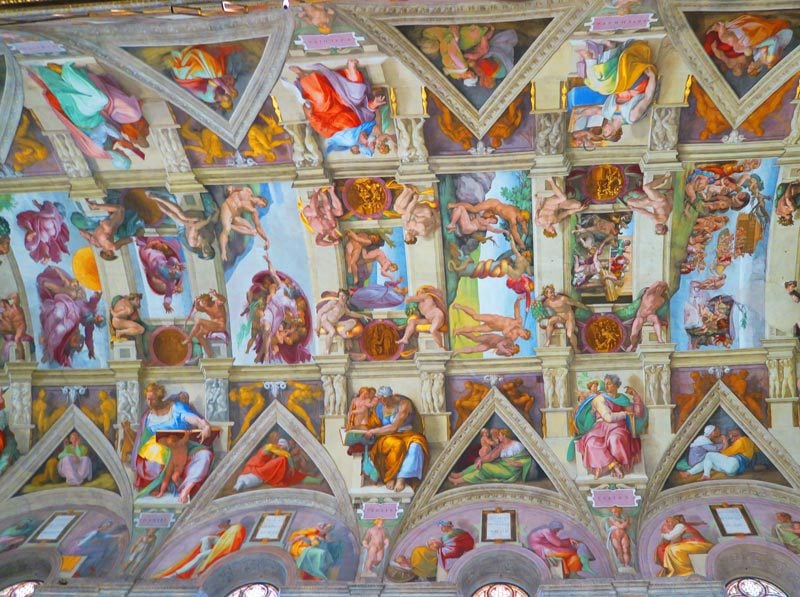

There are benches inside the chapel but guards do their best to keep the traffic flowing. Time your passing of the benches to when someone gets up and you’ll be able to take your time and marvel at the incredible artwork of the Sistine Chapel.
Lunch and Ice Cream
Value for money is hard to come by in this mega tourist area but head over to Borgo Pio Street where you’ll find a selection of decent restaurants and cafes. After a small pizza and salad, we headed to Gelateria Del Monte for some of the best ice cream money can buy in Rome.
St. Peter’s Basilica
Welcome to the largest church in the world and center of the Catholic world. St Peter’s Basilica without a doubt tops the list of best churches in Rome, a massive shrine dedicated to St Peter who is buried right beneath the basilica. It took 120 years to complete its construction, with Italy’s finest artists, including Bernini and Michaelangelo taking part in the holy mega-project.

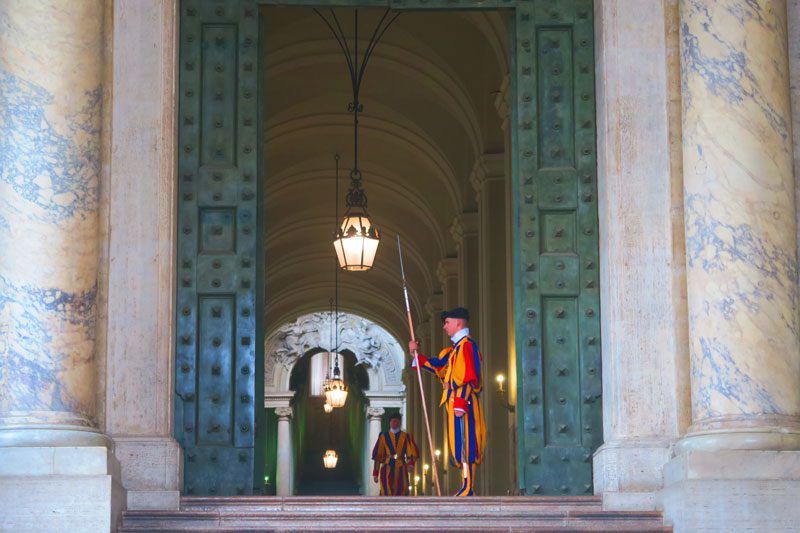
You’ll need to clear security before entering St Peter’s and if you purchased your tickets in advance, you’ll be able to skip the queues and go to the front of the line. Don’t forget that a strict dress code is enforced in St Peter’s with both men and women required to cover their shoulders.
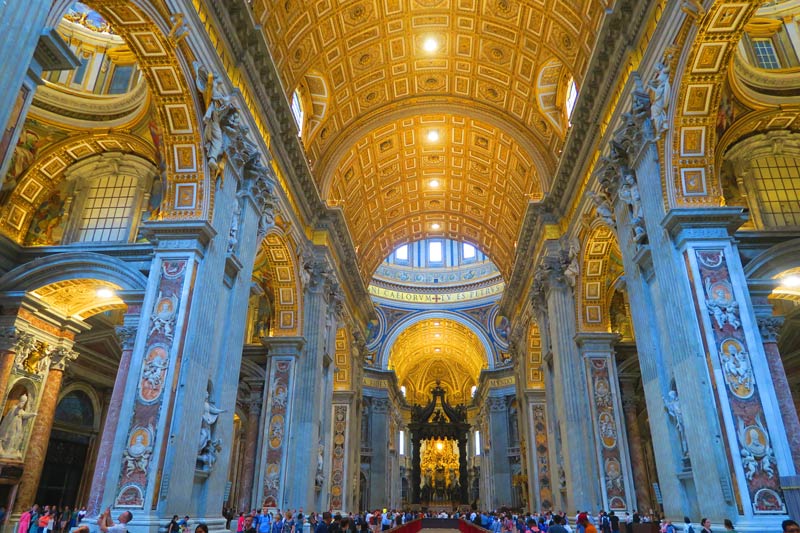
Of the basilica’s countless treasures, be sure to visit Michaelangelo’s Pieta and the Baldacchino. The former is a sculpture depicting Mary caring for a frail man and the latter is a jaw-dropping bronze canopy set high above the altar.

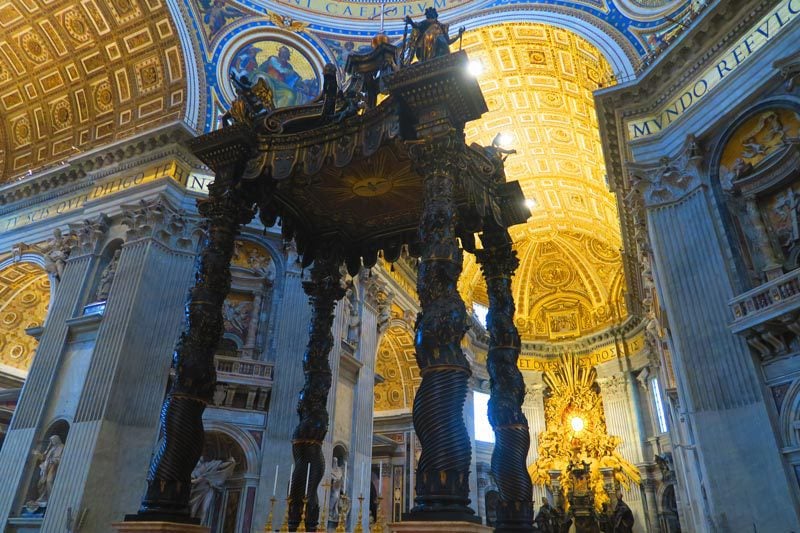
Other highlights in St Peter’s include the basilica’s decorated domes, religious sculptures and paintings. It’s hard to fathom the amount of resources that were invested to construct this church and the value of its interior decorations, especially when you consider what else could have been done with this wealth to ease suffering in the past.
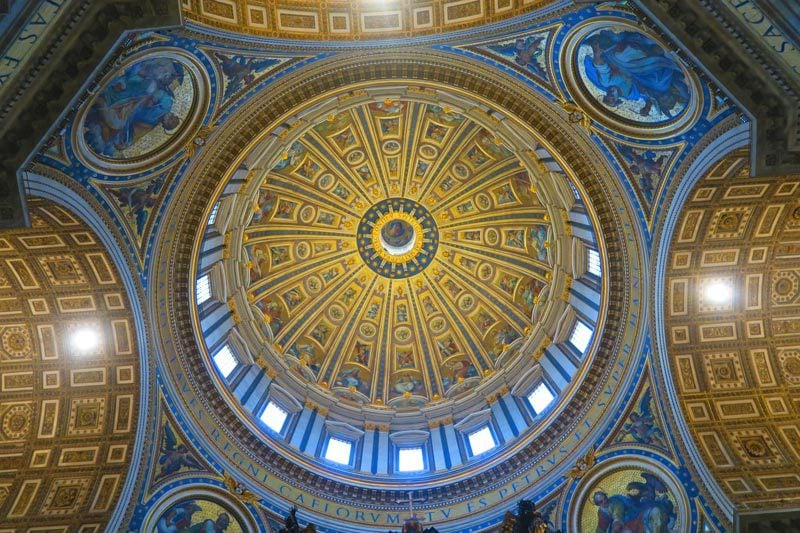
If you have the time, purchase tickets to the basilica’s dome and roof. These unique vantage points offer excellent views both of the grand interior and the piazza’s perfect symmetry.
Sant’angelo Castle
This is an optional stop after the visit to St Peter’s. If you still have some room left in your sightseeing gas tank, you can head back to the river bank and pay a visit to the Castel Sant’angelo (closed on Mondays). The circular castle was built in the 2nd century AD by Emperor Hadrian to serve as his mausoleum but it has been mainly used over the years as a fortress and place of refuge by various popes. After you explore the castle, be sure to head to its cafe and check out the panoramic views.
Prati to Piazza del Popolo
After exiting St Peter’s Basilica, we had enough sightseeing for the day and headed back to the Via del Corso shopping area through Via Cola di Rienzo which cuts through the affluent neighborhood of Prati. This is a great shopping street, mixing high-end boutiques with more down-the-earth brands, but its appeal to us is that was it was surprisingly tourist-free. Just for the sake of it, we stopped for one last ice cream, this time at Gelateria la Romana – one of Rome’s best.
Dinner in Monti
For our final dinner in Rome, we headed back to Monti for dinner at Trattoria Vecchia Roma. We had no luck reaching them by phone so with no reservations made, headed there early and got there just in time before a massive queue was forming outside at around 19:30 (10€ by taxi from the Pantheon area).

The vibe at this simple restaurant is very authentic. We had our usual bruschettas to kick things off, followed by a double order of pasts and swordfish. The service is quick and unpretentious, the house wine is more than enough and the prices are more than reasonable (less than 50€ for everything).
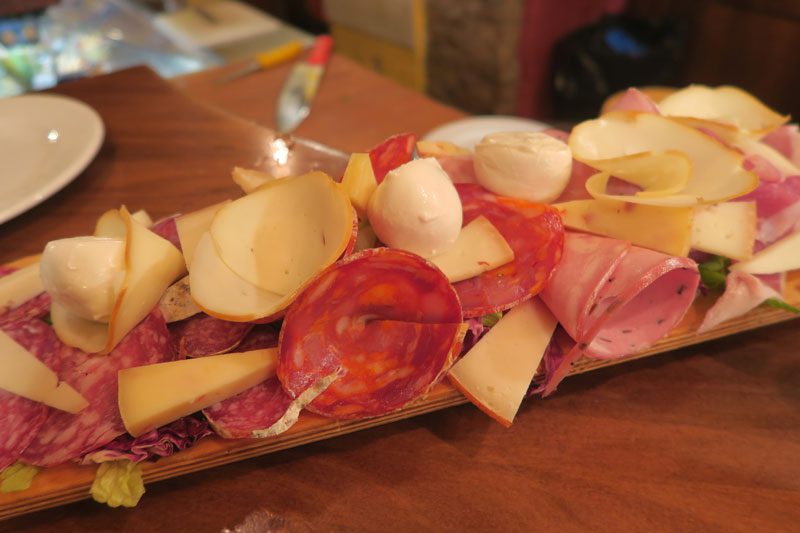
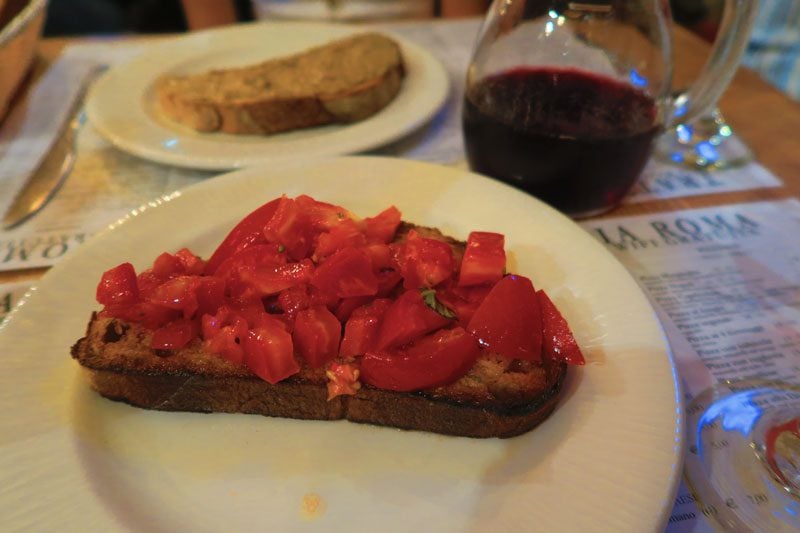
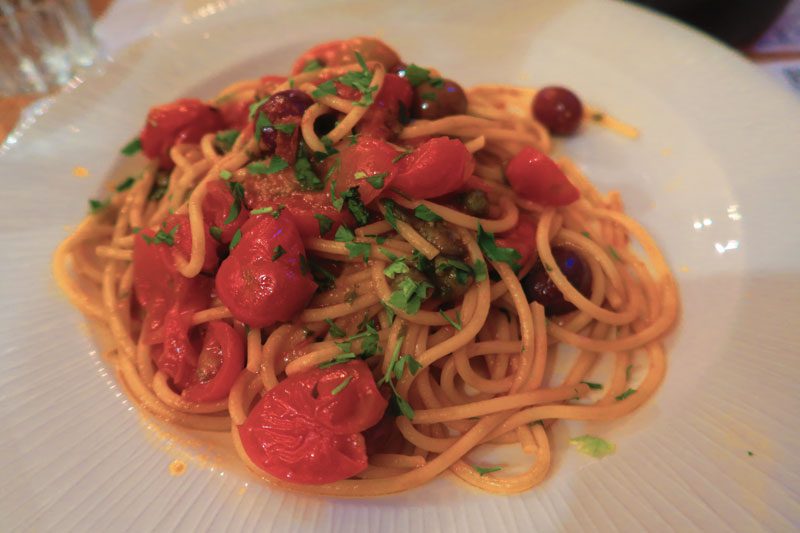
Additional recommended Monti restaurants for dinner include Trattoria Monti and Osteria Barberini. You can also try eating at the Mercato Centrale Roma which is a short walk from Monti.
Rome by Night
As tradition goes, no matter how much walking we did during the daytime, there was also room for a night stroll to see the Roman monuments lit up by night. On this final evening in Rome, we strolled from Monti back to our hotel via the ruins of the Forum of Caesar and Piazza Venezia.


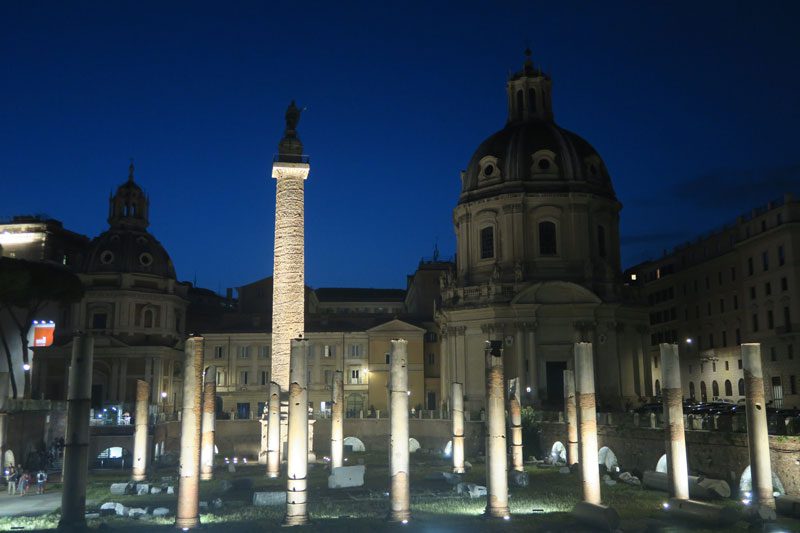
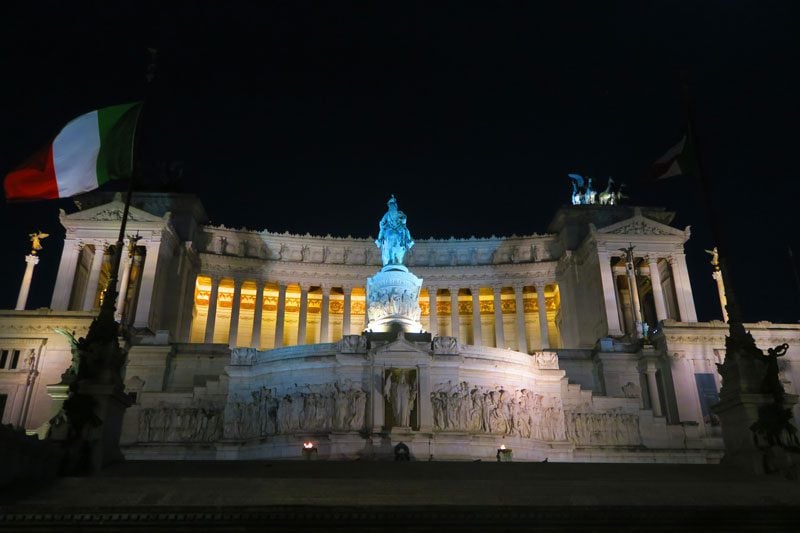
What’s Next?
Congratulations! Now you can visit Rome like a real pro. I hope you’ve found this 5 days in Rome sample itinerary useful in planning your own visit to the Eternal City. Be sure to check out the rest of the Rome travel guide collection, including Rome travel tips, the best places to eat and lots more.
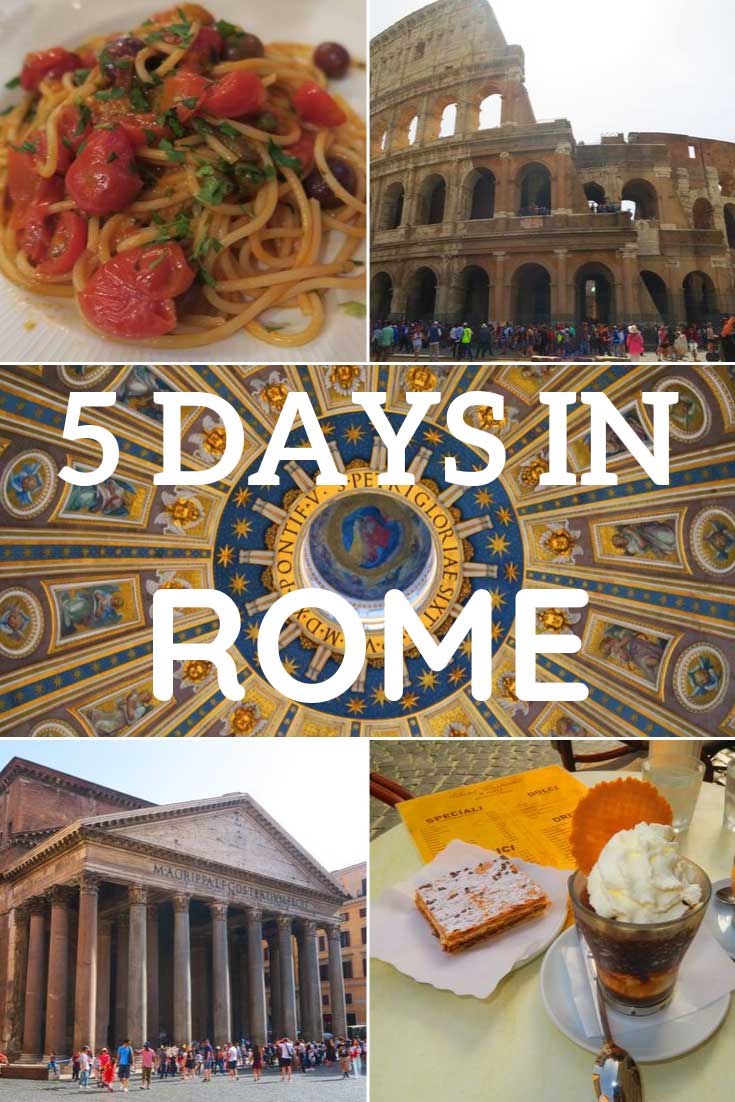
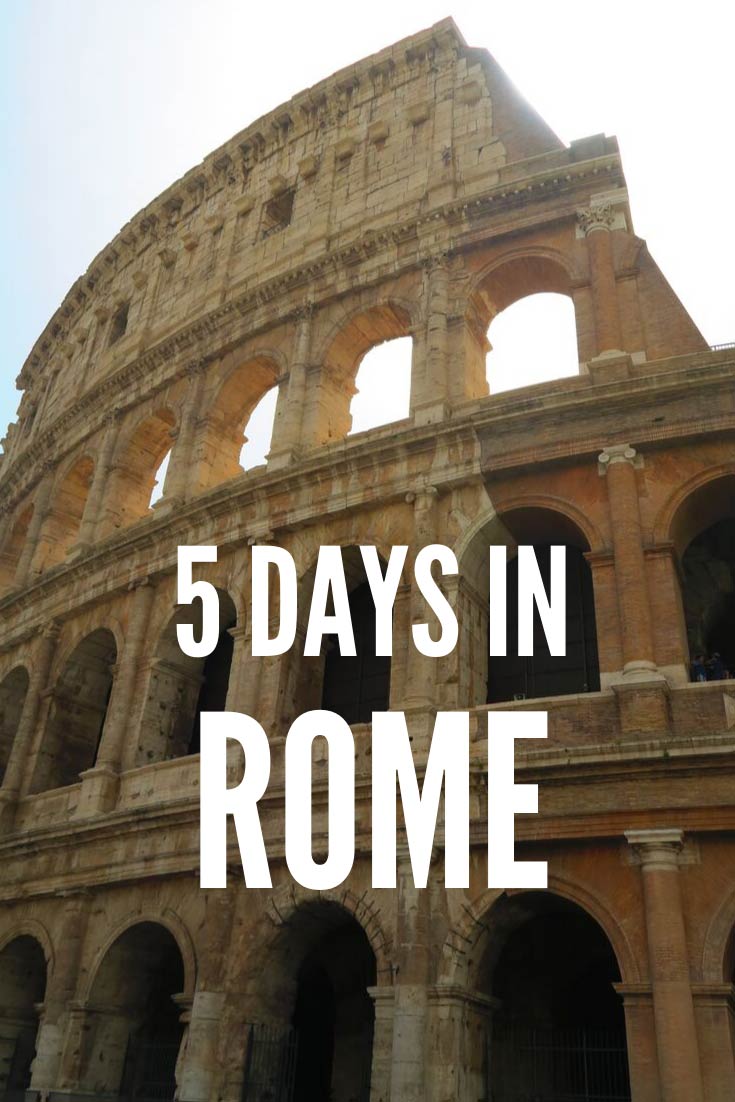
Pin These Images To Your Favorite Boards!
